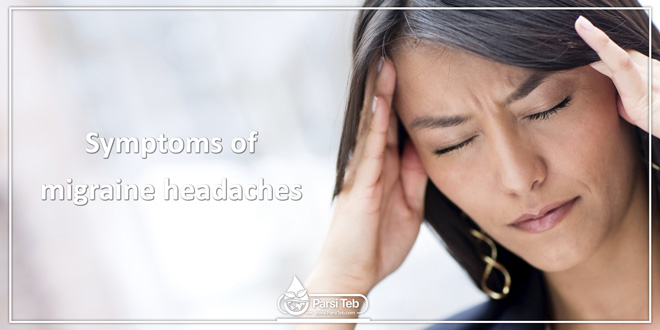Symptoms of migraine headaches
Migraine is a chronic condition with recurrent attacks. Most (but not all) migraine attacks are associated with headaches.
Migraine headaches usually are described as an intense, throbbing or pounding pain that involves one temple. (Sometimes the pain is located in the forehead, around the eye, or at the back of the head).
The pain usually is unilateral (on one side of the head), although about a third of the time the pain is bilateral (on both sides of the head).
The unilateral headaches typically change sides from one attack to the next. (In fact, unilateral headaches that always occur on the same side should alert the doctor to consider a secondary headache, for example, one caused by a brain tumor).
A migraine headache usually is aggravated by daily activities such as walking upstairs.
Nausea, vomiting, diarrhea, facial pallor, cold hands, cold feet, and sensitivity to light and sound commonly accompany migraine headaches. As a result of this sensitivity to light and sound, migraine sufferers usually prefer to lie in a quiet, dark room during an attack. A typical attack lasts between 4 and 72 hours.
An estimated 40%-60% of migraine attacks are preceded by premonitory (warning) symptoms lasting hours to days. The symptoms may include:
sleepiness,
irritability,
fatigue,
depression or euphoria,
yawning, and
cravings for sweet or salty foods.
Patients and their family members usually know that when they observe these warning symptoms that a migraine attack is beginning.
Migraine aura
An estimated 20% of migraine headaches are associated with an aura. Usually, the aura precedes the headache, although occasionally it may occur simultaneously with the headache. The most common auras are:
flashing, brightly colored lights in a zigzag pattern (referred to as fortification spectra), usually starting in the middle of the visual field and progressing outward; and
a hole (scotoma) in the visual field, also known as a blind spot.
Some elderly migraine sufferers may experience only the visual aura without the headache. A less common aura consists of pins-and-needles sensations in the hand and the arm on one side of the body or pins-and-needles sensations around the mouth and the nose on the same side. Other auras include auditory (hearing) hallucinations and abnormal tastes and smells.
For approximately 24 hours after a migraine attack, the migraine sufferer may feel drained of energy and may experience a low-grade headache along with sensitivity to light and sound. Unfortunately, some sufferers may have recurrences of the headache during this period.
 Parsi Teb Physical and Mental Health Journal
Parsi Teb Physical and Mental Health Journal 



